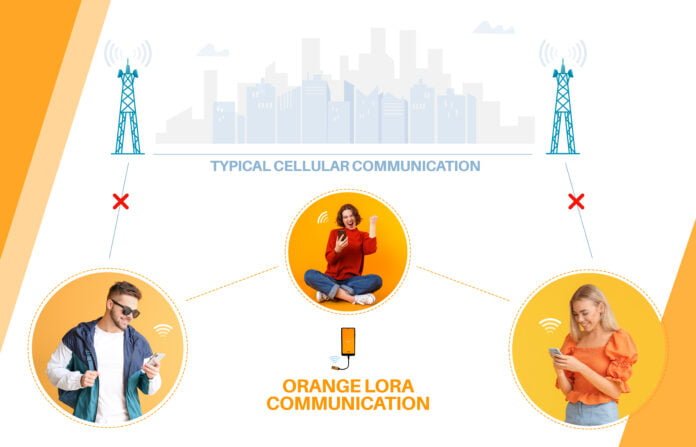Currently, where connectivity and data sharing have become essential, Orange LoRA (Long Range) Mesh networks have emerged as a reliable solution for creating vast, interconnected ecosystems of devices. These networks consist of different types of devices, each with its unique role and purpose.
In this blog post, we’ll dive into the fascinating world of LoRA Mesh networks, exploring the various device types and their capabilities, as well as how they contribute to data coverage and communication within the network.
What Kind of Device We Have in an Orange LoRA Mesh Network?
LoRA Mesh networks consist of five primary types of devices, each serving a specific function:
Messengers
These devices act as communication intermediaries, enabling data exchange between various devices in the network. Think of them as the liaisons, responsible for carrying and delivering messages between different endpoints. Orange Dongle is an example of devices that utilize this network as a messenger
Sensors:
Devices of this type play a crucial role in data collection. They measure various environmental parameters, such as temperature, humidity, or any other relevant data, and transmit this information to other devices within the network.
Actuators:
Actuators are the doers in the network. When triggered, they perform physical actions, such as turning on motors, lamps, or other connected devices. They respond to commands from other devices and actively influence the environment based on the received data.
Hubs:
Hubs serve as central nodes that facilitate the transfer of data across the network. Acting as data hubs, they ensure smooth communication and data flow between different devices, enhancing the overall network’s performance.
Gateways:
While gateways are essential for connecting LoRA Mesh networks to the internet, they also introduce an element of vulnerability. To maintain a 100% private system, some might choose to exclude gateways. However, they play a crucial role in bridging the network to external systems and enabling remote access.
How Is Connectivity in Orange LoRA Mesh Network?
One of the remarkable features of LoRA Mesh networks is their impressive coverage range. Devices within the network can communicate with each other over considerable distances, ranging from 3-4 to 10 km. This extensive range allows devices to connect seamlessly in various areas, from cities to farms and beyond, creating a vast and interconnected network.
How Far Can Orange LoRA Mesh Devices Reach? Discover the Impressive Data Coverage
The strength and reliability of an Orange LoRA Mesh network lie in the sheer number of devices contributing to data coverage. Each device acts as a link, passing data along until it reaches its intended destination. For instance, if a sensor measures temperature or humidity outside its range, it can pass the data to another device, such as a hub, messenger, or actuator, which is within range. The receiving device then becomes the messenger, relaying the data further until it finally reaches its destination.
Among the various device types, hubs stand out as valuable assets to the network due to their specialized function of transferring data. Their primary responsibility significantly improves data coverage within the entire network.
Conclusion
Orange LoRA Mesh networks introduced by Arshon Technology, present a powerful and versatile solution for creating interconnected ecosystems of devices. The combination of messengers, sensors, actuators, hubs, and gateways facilitates seamless data exchange and communication across impressive distances.
While gateways may provide connectivity to the internet, those seeking complete privacy may choose to eliminate them from their system. Nonetheless, the network’s reliability and data coverage remain robust due to the collaborative efforts of all device types, with hubs playing a pivotal role in data transfer.
With the increasing adoption of Orange LoRA Mesh networks, we can expect even more innovative applications and further advancements in the world of IoT and connected devices. These networks open up a realm of possibilities, from smart cities to precision agriculture and beyond, transforming the way we interact with and perceive technology in our daily lives.
